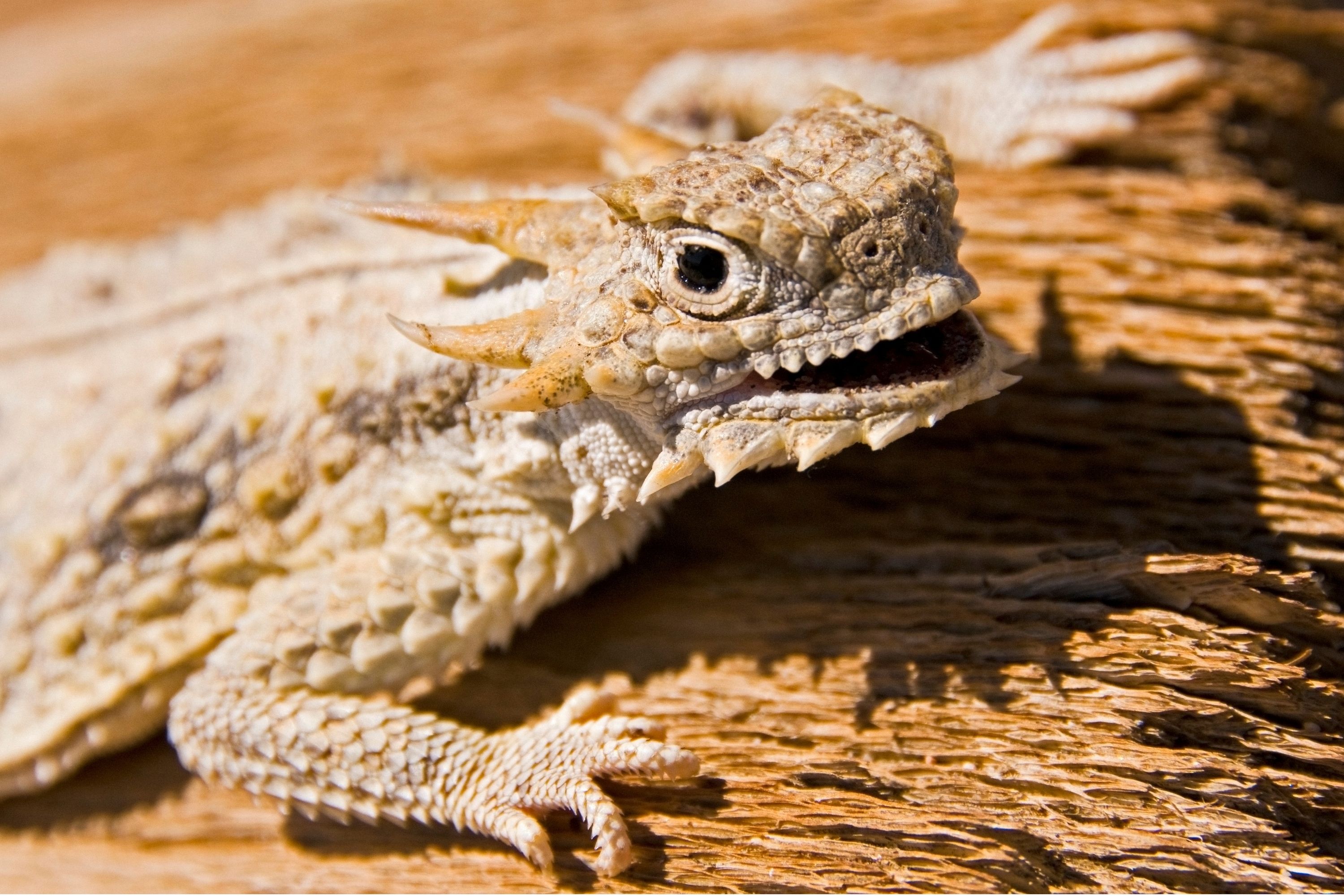Flat-tail horned lizard
(Phrynosoma mcallii)

Description
The flat-tail horned lizard (Phrynosoma mcallii) is a species of lizard in the family Phrynosomatidae. A species of reptile, it is endemic to the Sonoran desert of the southwestern United States and northwestern Mexico. Its multiple adaptations for camouflage help to minimize its shadow. The species is threatened, with a restricted range under pressure from human activities such as agriculture and development, and is specially protected in the United States. The flat-tail horned lizard is named for United States Army Colonel George A. M'Call, who collected the first specimen in California in the 19th century. The species occupies a small range in the Sonoran Desert of southeastern California, southwestern Arizona, and extreme northern Mexico in the Baja California and Sonora states. Over time, horned lizard populations have adapted to climate, food, and predators, causing them to in some ways be distinct from one another. The flat-tail horned lizard has evolved elaborate camouflage measures to eliminate shadow. Their bodies are flattened, with the sides thinning to an edge; the animals habitually press their bodies to the ground; and their sides are fringed with white scales which effectively hide and disrupt any remaining areas of shadow there may be under the edge of the body. Different populations of the species match their local backgrounds using a combination of colour-creating cells in their back scales. These cells include black melanophores and red chromatophores in an upper layer, scattered over a layer of white reflective iridophores, enabling the flat-tail horned lizard to match the local soil or rock. So for example the Algondones Dunes population of San Luis, Sonora is generally redder than the population on the whiter Thousand Palms dunes of California. In addition, the dark midline helps to disrupt the outline of the lizard, resembling the thin shadows of plant stems in its windswept sand habitat. The flat-tail horned lizard is threatened by development, agriculture, and other man-made intrusions into their small range. The majority of their remaining habitat in the US is administered by the Bureau of Land Management. The species (Phrynosoma mcallii) frequently coexists with sources of natural gas, oil, geothermal energy, and minerals which can found in its habitat.
Taxonomic tree:







